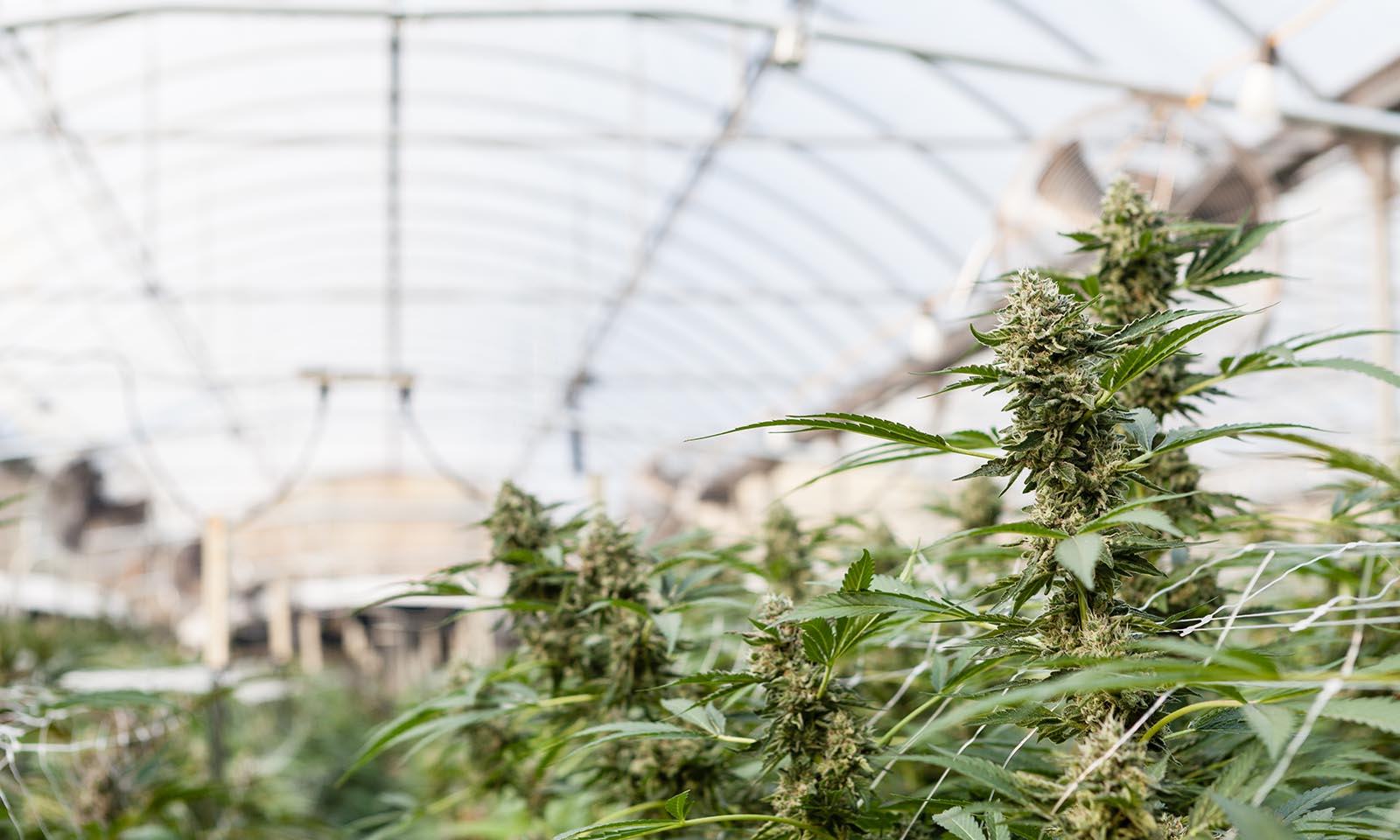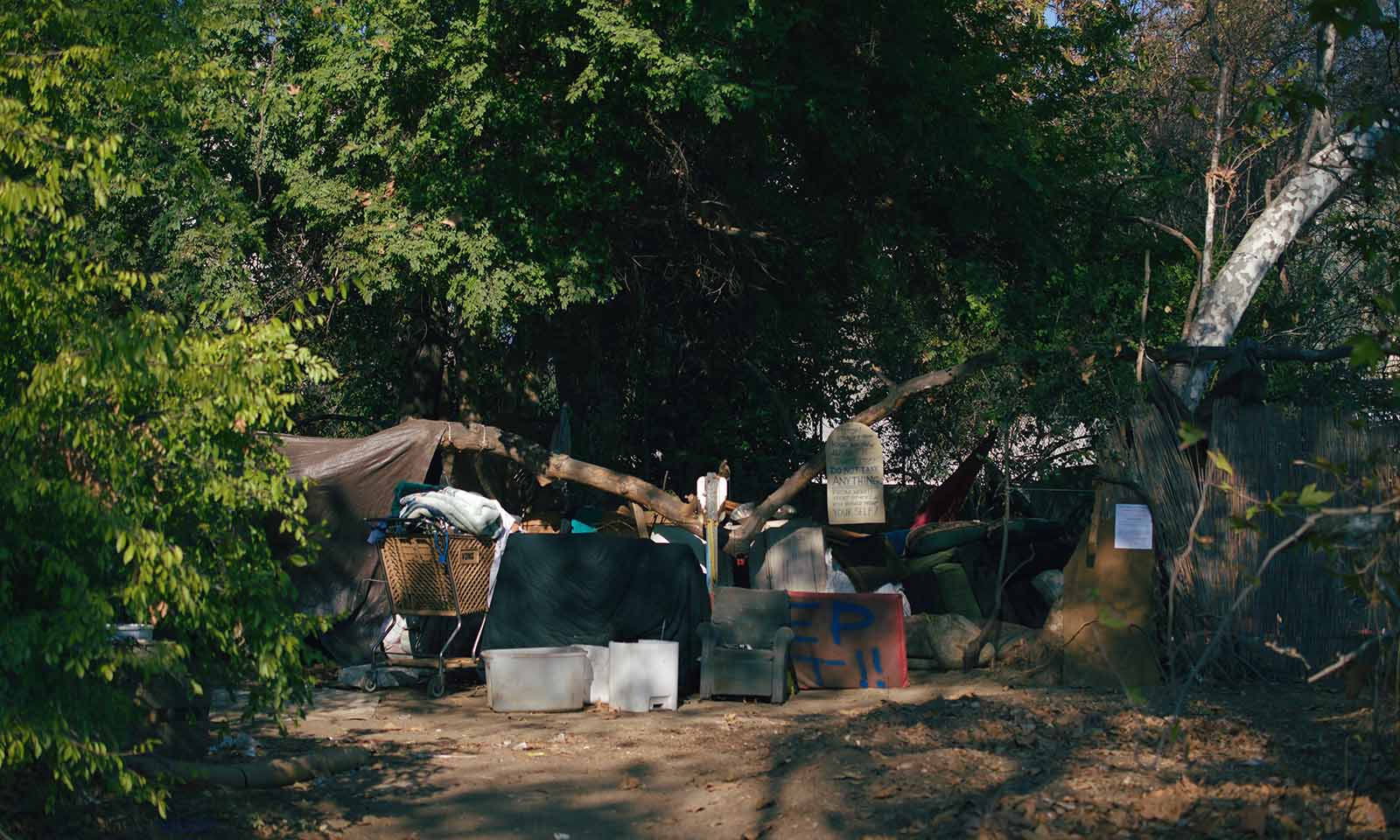Does Marijuana Legalization Cause Homelessness?
Anti-cannabis activists such as Kevin Sabet have recently spread the idea that legal cannabis encourages the country’s ongoing homelessness crisis. While there’s no conclusive evidence to prove this causation, it appears that legal cannabis use itself doesn’t cause homelessness — but the unequal opportunities in the booming legal marijuana industry might play a role.
The West Coast has always been a beacon for the nation’s homeless population. Weather, space and services have been longtime draws, but today, homeless populations and encampments have spiked to crisis levels in West Coast cities, despite an overall national decline in homelessness. One thing is clear: there will be no meaningful solution to the homelessness crisis until the causes of the problem are accurately identified and alleviated. Unfortunately, there is one wildly unproven and irresponsible theory that has taken hold in some politically influential circles: Legal marijuana is to blame for the rise in homelessness.
This idea that cannabis legalization causes homelessness is not only unfounded, but the argument further exacerbates the complex problems facing these communities by leading to ineffective partisan non-solutions. The sad irony of the situation is that legalization has likely contributed to homelessness, but not in the ways that the anti-cannabis lobby is suggesting. Had cannabis legalization been rolled out in a meaningful and fair way, marijuana would be lifting up all boats, not increasing the wealth disparities that have truly driven the growing income gap causing the crisis.
The Big Lie
Shortly before the 2016 election, I was contacted by friends within the pro-cannabis Mormon community in Las Vegas. They were a group of mothers and heritage herbalists who supported the re-legalization of the cannabis plant and greater medical access to it, and they were horrified to see anti-cannabis campaign flyers turning up in their churches. I attended these “information sessions” at their invitation, which were headlined by a woman named Jo McGuire, an “expert” who had come all the way from Colorado to talk about the negative effects of legalization.
Of course, McGuire failed to disclose she was not in any way a medical or academic professional, but rather a board member and lobbyist for the Drug and Alcohol Testing Industry Association (DATIA), an organization representing the interests of publicly traded corporations that profit off mandatory work and government drug testing. She also failed to mention she is an affiliate of the pharmaceutical-sponsored, anti-cannabis lobby Project SAM (Smart Approaches to Marijuana) and was taking many of her talking points direct from its founder, Kevin Sabet. Sabet’s most prominent talking point as of late? Legalization is driving people to the streets to use drugs.
In the information sessions that I attended, McGuire made similar claims about the links between legal marijuana and homelessness. Afterward, I reached out directly to inquire about the studies and references she used to prepare her presentation and draw these conclusions. Any person who interprets and analyzes population statistics as their profession will be quick to tell you that correlation does not equal causation — or in this case, just because marijuana legalization and the increase in homelessness are happening at the same time does not mean they are directly related. In order to make that deduction, you need proof of the correlation. For example, McGuire’s argument is based on the flawed logic that marijuana use somehow didn’t exist in either homeless or sheltered populations before legalization. But still, I wanted to see the evidence McGuire would reference, and she didn’t disappoint.
McGuire cited a single internal report from Posada, a Pueblo, Colorado-based non-profit organization that provides services to its local homeless population. The internal report’s conclusions were drawn based on second-hand, self-reported outcomes in a single region outside the state’s major metro areas. The report acknowledges the rise of homelessness in the region, and then uses numbers about families with access to financial resources and shelter moving to Colorado for medical cannabis.
It then conflates those numbers with the growing homeless population because, they claim without citing, some of the homeless told them they moved there for “legalized pot.” Posada “feels” the numbers of homeless people “moving for pot” are actually higher.
I followed up with McGuire and pressed her to support her assertion that the homelessness was caused by a desire to “use pot.” She replied, “The shelter workers report that clients tell them they’ve moved to Colorado for marijuana. I learned today that both hospital emergency departments and shelters have coined the term ‘Marijuana Immigrants.’”
I persisted, “When you spoke in Las Vegas, you presented quite a bit of information on the notion that the homeless problem is tied to marijuana legalization. Are you saying this is all anecdotal?” McGuire replied that the anecdotes she mentioned and the single study by Posada were “statistical reports” — they are not — and were sufficient enough to draw that conclusion.
Still, the theory that legal marijuana causes homelessness has gained enough traction to be given the proper “non-biased” treatment in the news and for Colorado’s Governor John Hickenlooper to support the theory in his 2017 state of the state address. “There’s no question that marijuana and other drugs — in combination with mental illness or other disabling conditions — are essential contributors to chronic homelessness,” Hickenlooper said.
The reality of the situation is that legal marijuana may be one of several contributing factors to the growing homeless population in western states, but there is no actual data at this time to definitively draw a correlation. Additionally, the oversimplified deduction that the desire to “do drugs” is bringing people to the streets distracts from the real causes of homelessness, which might be exacerbated by the economic booms associated with marijuana legalization. Ultimately, focusing on marijuana use instead of the marijuana economy is putting the solutions to the homelessness crisis further out of reach.
Inside the West Coast Crisis
If you live on the West Coast, there is no avoiding this homelessness crisis, because if you aren’t living on the brink of poverty or homelessness yourself, you are watching it grow faster around you than rent or traffic. The results of large amounts of humans living on densely populated urban streets are catastrophic. I’ve spent the last 10 years covering cannabis issues on the West Coast, and I have watched first hand as the homeless population has boomed in conjunction with the boom and bust of the marijuana Green Rush.
The Associated Press reported that while the overall population of homeless people in America has actually been declining in recent years, the homeless populations of California, Oregon and Washington grew by 14 percent from 2014 to 2016. California’s city streets are now home to one-quarter of the national homeless population. The surge of people living on the streets, and subsequent spread of loose feces, led to a deadly hepatitis A outbreak in California that prompted Governor Jerry Brown to declare a state of emergency last October. Since 2015, at least 10 cities or municipal regions in California, Oregon, Washington and Hawaii have also declared states of emergency surrounding their growing homeless populations. The AP concluded, using actual data, that the cause of the homeless crisis in the region was the booming economy and skyrocketing rents — not legal marijuana itself.
Additional evidence comes via data from the United States Department of Agriculture (USDA), which shows population declines in rural areas of the eastern U.S. and increases in western metro areas. The USDA attributes this migration to people following economic opportunity. There is no conclusive evidence to say that legalization has driven the migration, but considering two of the nation’s fastest growing industries — technology and cannabis — are centered in western metropolitan regions, it is reasonable to theorize that legalized marijuana has been a contributing factor to the in-migration. This in-migration then serves as a contributing factor to rising rents and increased home value speculation, which in turn pushes more people to the streets.
And although none of the data I am citing is enough to prove a correlation between the economic booming of legal marijuana industry and homelessness, there are other indicators that support my theory.
Since the start of the Green Rush in the late 2000s, the city of Denver added 100,000 residents, now a full seventh of its population. The metropolitan region has since added even more, especially as the marijuana money started flying around after legal sales began in 2014. Since the 2016 election — when California, Nevada and Massachusetts also became legal marijuana states — the in-migration to Colorado has continued, but started to level off and decline.
When the sparsely populated state of Oregon voted to legalize marijuana in 2014, it went from a population of 3.8 million to nearly 4.2 million in about five years. The migration overwhelmed the city of Portland, which saw a 10 percent spike in people living on the streets between 2016 and 2017. The in-migration has now started to level off as more states have legalized.
What Portland, Denver, Seattle and California cities have in common is not just legal pot (and a whole host of other cultural norms that don’t necessarily jive with Midwestern or Eastern sensibilities), but economic opportunity. Legalized pot contributed to this economic opportunity, and ironically, contributed to the lack of opportunity for those who need it the most.
Where Sabet and McGuire get it wrong is that if legalized pot is such a large contributor to homelessness in these cities, it’s not because of cannabis consumption, it’s because of the inequity of opportunities in the legalized cannabis industry. That inequity is generally created by regulations meant to appease anti-cannabis advocates like Sabet and McGuire, at the expense of small business and stable local economies.
The Core Cannabis Conundrum
The Green Rush was born after the economic collapse of 2007 and sold to the public through the logic economic revitalization, but city-by-city and state-by-state, we are increasingly seeing the economic benefit of cannabis either concentrated at the top or extracted out of the community, with very little of the economic opportunity trickling down to the community itself.
One of the largest tent cities I have ever seen is currently spread across multiple districts of central and eastern Los Angeles. As I drove through the encampments this past month, the irony of our corporatized cannabis economy was not lost on me, as many tents sat beneath bright red MedMen “It’s Legal Now” billboards, part of a $2 million advertising campaign. MedMen is the most prominent dispensary chain in Southern California — the world’s largest legal marijuana market — and now a subsidiary of the Cronos Group, a publicly traded holdings company in Canada that includes a cannabis pharmaceutical company now with the world’s largest cultivation and research facility.
As federal prohibition law focuses cannabis opportunities on the West Coast and the tech-driven economy pushes more and more Americans westward for opportunity, pointing the finger at the use of cannabis as the source of homelessness does this vulnerable population and the communities they live in a real disservice. The problems cannot be solved until they are properly identified. Let’s place the blame rightly where it belongs: crony capitalism and an unequal economy.
McGuire and Sabet are drug war profiteers, as are many of the funders and investors getting into the legal marijuana space out West while local economies and patients suffer.
But let’s not assign blame simply to assign blame; let’s solve this homelessness crisis.
Cannabis, like other agricultural crops, is best at its most diverse. The market demands variety, including variety in products, cultivars, methods of ingestion and tools to do it with. In a true free-market merit-based economy with lowered barriers to entry for smallest businesses, competition thrives and all boats rise as money floods into the legal market. I believe that legal marijuana markets designed to foster small businesses — along with federal decriminalization and descheduling — will lead to a restructuring of our local agricultural economies that make our populations more economically stable and more likely to keep their homes. Cannabis is the perfect vehicle to this healthier future.
TELL US, how do you think marijuana legalization has affected homelessness?



























